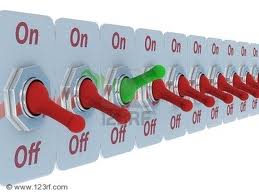Storing non-numerical information
inside a computer
- Computers can
only store
binary numbers in
its memory
(because computer memory is
made up of
electrical switches that can
be either
ON or
OFF):
- $64,000 question:
-
How can a
computer
store
(non-numerical) of
information ???
|
|
Storing non-numerical information
inside a computer
Demistifying the
computer system:
- Computer memory can
only
store
binary numbers
-
How then can a
computer
store
(non-numerical)
information
(like letters) ???
|
Answer:
- We use
codes (i.e.:
agreement) !!!
Example:
01000001 represents the letter 'A'
01000010 represents the letter 'B'
01000011 represents the letter 'C'
etc
|
|
Code and encoding scheme
Codes:
- What is a code:
- A
code is an
agreement on
how information is
represented
|
(When you were a kid, you may have designed a
secret code with your
friends to
exchange messages)
- There are
many different codes used
in the computer to
represent
different kinds of
information.
Examples of
codes used in the
computer:
- There is a code
(called "2's complement code") to represent
integer numbers
- There is a code
(called "ASCII code") to represent
characters in text
- There is a IEEE 754 code to represent
floating point numbers
- There is a 0/not-0 code to represent
boolean values
|
|
Example of a
code used in a computer program:
code for Boolean values
- Many
programming languages
(including C and
Python) uses
the following
code to
represent
Boolean values:
Binary number Boolean value represented
--------------- ---------------------------
0000000 false
not 0000000 true
|
|
DEMO:
/home/cs255001/demo/data-type/boolean-code.c
DEMO:
/home/cs255001/demo/data-type/boolean.py
(python3 boolean.py)
❮
❯
